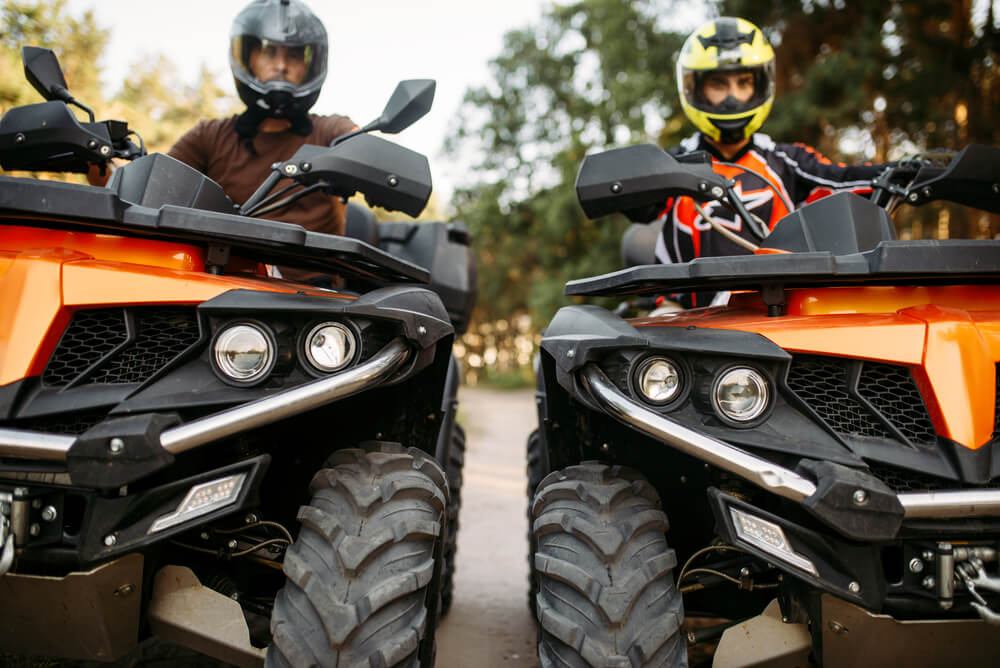The automotive sector is defined by abbreviations or acronyms that serve as a shorthand for referring to certain vehicle types, components, or functions.
Most people have been wondering, “What does ATV stand for?” Certain acronyms used in the automobile business have a distinct meaning when applied to other industries.
So in the article, you’ll get the answer to the question.
Let’s get started
What Does ATV Stand For?
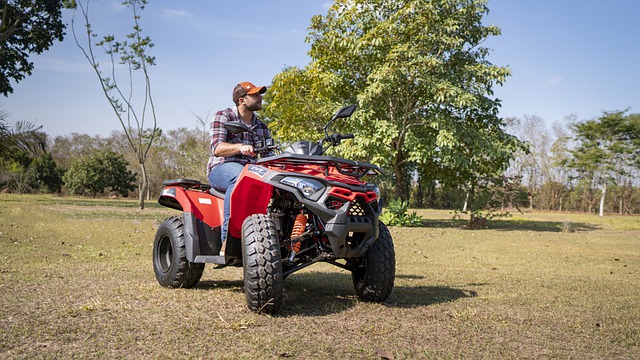
ATV is an acronym for “All-Terrain Vehicle” in the automobile industry. It is a customized vehicle with four enormous non-pneumatic or low-pressure tires, a rider-saddle seat, and handlebars for vehicle control.
ATVs are built specifically for use on off-road terrains, not on highways or paved roads; as a result, their particular characteristics assist in ensuring their ruggedness in the designated regions where they are supposed to be utilized.
Type of ATVs
ATVs come in a broad range of sizes, from little 50cc youngsters’ versions to huge utility vehicles with over 1,000cc engines.
They can also differ in amenities, cargo capacity, and other characteristics. Let’s jump right into some of the most popular ATV designs.
Sports ATVs are recreational vehicles that are light to modest in weight. They feature many suspension systems, so they’re great for riding over bumps and turning sharply.
However, payload and towing capacity are frequently limited, with speed and maneuverability taking precedence.
Utility ATVs are heavier-duty vehicles meant for transporting and towing, which means larger engines (at least 700cc), plenty of power, and usually a luggage rack.
Ranchers and hunters love them, and they’re a fantastic choice for anyone who wants to get work done in difficult terrain.
Youth ATVs are short versions of ATVs built exclusively for kids. They are easy to ride because, in addition to their diminutive size, they usually feature an automated transmission or no transmission.
They’re also equipped with speed limiters for further safety. As a result, they’re an excellent alternative for children who are just starting to ride.
Important Equipment to Include When You have ATV
Helmet
Like riding a motorcycle or bicycle, an ATV exposes you to danger. In the event of an accident, which is practically likely when flying through the woods, you must fully protect yourself.
Clothing for Safety
When riding, wear sturdy boots, pants, and long sleeves. Proper ATV gloves are critical to safeguarding your knuckles from flying stones.
Toolkit
There is no necessity to carry a full-sized toolbox with you at all times, but an ATV toolkit should include a few essentials. Keep an adjustable wrench, a Swiss Army knife, duct tape, and a tire gauge in your tool kit.
Kit for First Aid
You should have a first-aid package on hand if you get minor injuries such as scratches or bruises.
Winch
If you get stuck, you will need to call a family member or friend to assist you. With a winch, you’ll tie the wire around a trunk and hoist yourself out.
ATVs, in Comparison to UTVs
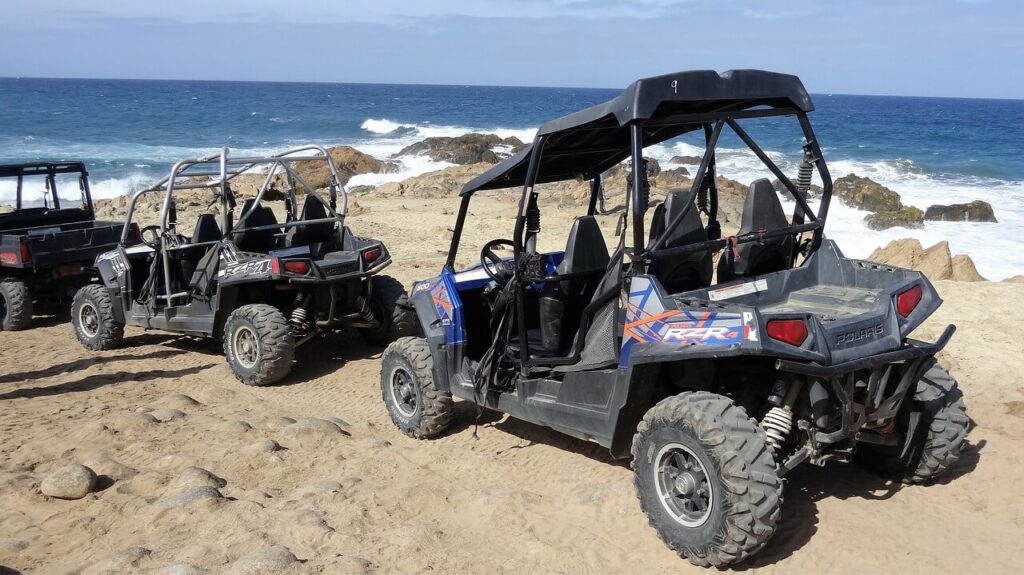
ATVs and UTVs are frequently mistaken for one another. However, they are not synonymous. UTVs, or Utility Terrain Vehicles, are equipped with bucket or bench seats rather than saddle seats.
If you desire to ride in groups and are concerned about safety, a UTV is your best option. Owing to the bigger size of UTVs, they allow for many passengers. Since the driver and passenger sit beside one another, they are commonly referred to as side-by-sides (SXS).
They are typically extremely comfortable due to their automobile-style seat or bucket seats and roll-cage-style shell.
UTVs, as the name indicates, are built for labor and transport. They are extremely popular with farmers and ranchers because they enable you to transport equipment along back paths that trucks cannot reach.
Besides, most UTVs come equipped with storage capacity that provides a convenient method to store your goods.
On the flip side, ATVs are more physically hard to ride than motorcycles. You must straddle the seat and maintain balance to retain optimal control. However, if you want to ride solo, they provide enough adrenaline-pumping excitement.
ATVs are smaller than UTVs and are frequently preferable for maneuvering in confined situations and making fast turns (thus why these machines are used for racing).
Cost-wise, an ATV is much less costly than a UTV. However, this refers to the increased safety features (roll cage, seat belts, and windscreen), not to mention the numerous customizations that can be done.
While both the ATV and UTV may be upgraded for improved performance, common UTV upgrades (e.g., four-wheel independent suspension, power steering, and specialized lighting) tend to be more expensive.
Frequently Asked Questions
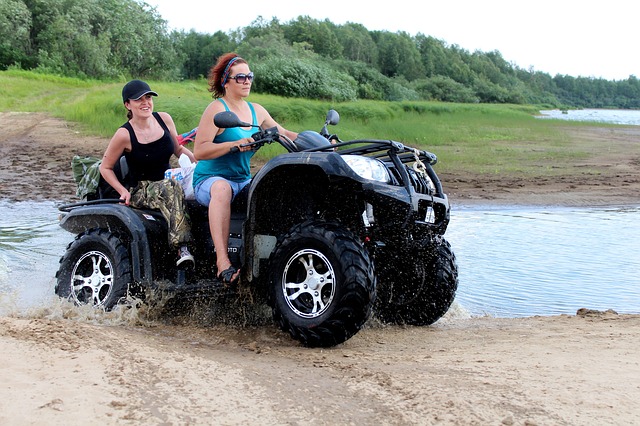
Which Year is My ATV?
Anytime a worn-out component has to be replaced entirely, the year of the ATV model is critical in ensuring that the proper replacement is used.
It’s rather straightforward to determine the year of your ATV by examining the characters on the Vehicle Id Number (VIN). Therefore, to determine the model year of your all-terrain vehicle (ATV)
Locate the 17-character vehicle identification number on your car.
Locate the tenth (10th) (number/letter) character. If it is a number, please remember that the digits 1 to 9 correspond to 1971–1979 or 2001–2009. If it is a letter, the year associated with these alphabets may be of assistance.
Do Four-Wheel-Drive Vehicles have Titles?
ATVs’ registration and insurance require titles, so most off-roaders have titles on their four-wheelers. That’s why most new ATVs made after 1997 are equipped with titles.
Who Is Allowed to Ride (and Who Is Not)?
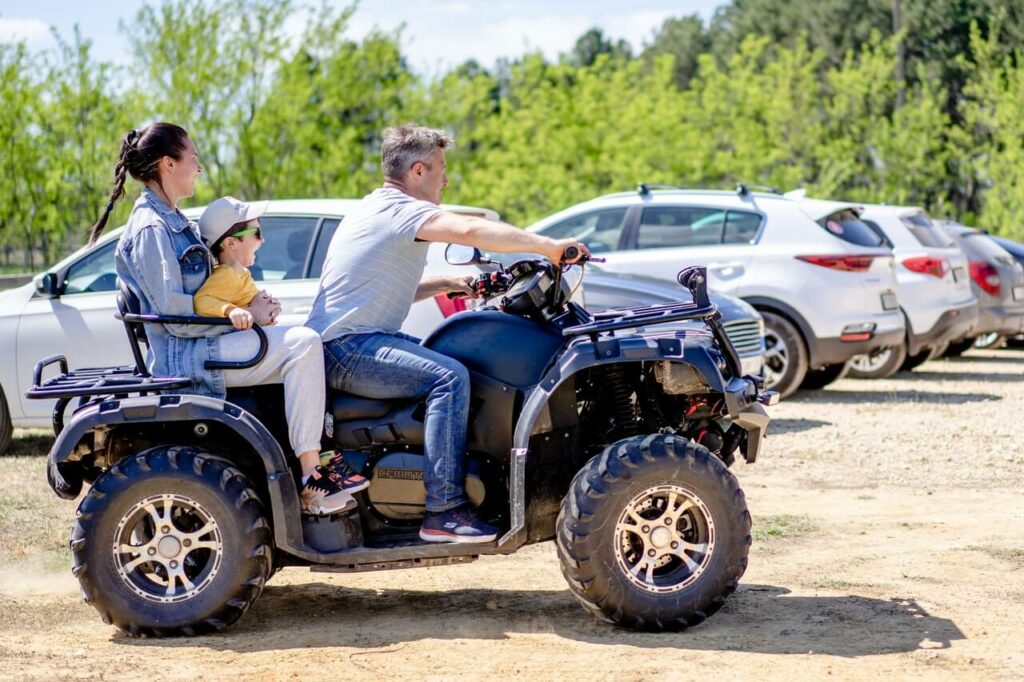
There are no government laws or age restrictions on ATV riding. Rather than that, each state has its own set of regulations and rules. Certain states require ATV riders to be at least sixteen years old and to possess a safety certificate.
Yet, other states allow kids as young as ten years old to ride ATVs under the supervision of an adult who holds a valid driver’s license.
To operate an ATV safely, the driver must make immediate decisions, such as increasing or decreasing speed or moving weight, in response to changes in the surroundings.
Children under the age of sixteen are perceived to be unable to make these decisions or possess the necessary abilities to carry them out.
Conclusion
The whole definition of ATV in the automobile industry has been revealed, along with its manufacturing, design, and purpose.
Thus, you have thoroughly understood “What does ATV stand for?” The knowledge in this post has undoubtedly clarified the concern you had. Also, we’ve distinguished between the UTV and ATV, which means you won’t have difficulty knowing which is which in the future.

